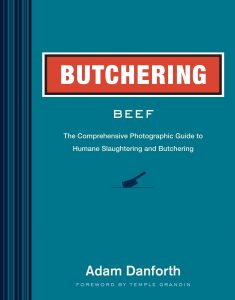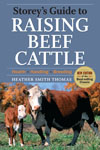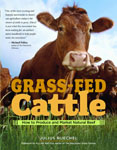
Breed Facts
Status:
Recovering
Use:
Beef, Draft
Adult Weight:
1100 – 2000 lbs.
Temperament:
Docile
Experience Level:
Intermediate
Notes:
Hardy; efficient for grass based production
Country of Origin:
England
RED DEVON CATTLE
Devon cattle were developed over several centuries on the southwestern peninsula of England possibly from breeds brought to the island by various settlers crossed with cattle they found on the island. There is reference to a red bull of the Devon prototype being given to Tavistock Abbey in 1366, but they are not mentioned again until writings in the 18th century. Cattle from North Devon were popular for their market value, superior beef, and ability to finish on forage, and their breeders were well-known for their devotion to the breed. (The Devon is sometimes called the North Devon to distinguish it from the South Devon, a large, dun, beef breed to which it is not closely related, although until the mid-19th century, the two breeds were sometimes crossed.)
The breed’s name comes from Devonshire, though cattle were also raised in the neighboring counties of Cornwall, Somerset, and Dorset. Devons were valued for both their high-quality beef and their rich milk used in Devonshire cream. They were especially recognized as the quickest and most active oxen in the British Isles. The breed also had the reputation as an easy keeper, able to thrive on rough forage.
In 1623, Pilgrims brought the first Devon cattle to New England (aboard the ship Charity) – one bull and three heifers. The hardiness and practicality of the breed, plus the availability of Devon cattle near the ports of departure, made Devons an obvious choice for early immigrants to the Americas. The breed became well established in New England during the 1600s and was taken down the coast as far as Florida during the 1700-1800s. The cattle also went west, as Devon oxen were the draft animals of choice for the Oregon Trail.
By the late 1800s, however, the Devon began to be replaced in America by the Shorthorn, a more productive multi-purpose breed. However, farmers in New England mostly chose to keep their Devons. In 1855, the first American Devon Herdbook was created, and the American Devon Cattle Club was begun in 1884. By 1900, Devons were rarely seen outside of New England. Only in this region did the breed continue to be valued for its hardiness and the ability to thrive under rugged conditions – qualities in which it surpassed the Shorthorn.
By the 1950s, the market for multi-purpose cattle had disappeared and the Devon breed neared extinction. In response to this challenge, the breeder community split. Most breeders began to select intensively for beef production to compete with other beef breeds. This population was called the Devon, Beef Devon, or Red Devon. A few breeders continued to select their animals for meat, milk, and draft; this population was called the American Milking Devon. Beef-selected Devon cattle populations are found in several other countries, including Britain and Brazil, though the long separation of these populations makes it unclear whether they are still a single breed. Research continues into the status and characteristics of Devons internationally.
Red Devon cattle are ruby red with black-tipped, creamy white horns. Cattle are medium in size, with cows averaging 1,100 lbs. and bulls 1,600–2,000 lbs. The appearance is compact with a straight topline, square-set legs, and well-formed udders.
The Red Devon has several assets that would be beneficial in today’s competitive beef market. The breed’s history as a dual-purpose animal gives it a greater maternal ability than most other beef breeds. (Any decline in this characteristic is easily corrected by using a Milking Devon bull that can be registered in the Devon herdbook.) The Devon is known for high quality beef, and the breed’s hardiness and grazing ability make it an excellent choice for grass-based production. As it is distantly related to other British and European breeds found in North America, the Devon provides great hybrid vigor when used in commercial crossbreeding. The breed is best for someone with at least intermediate experience with beef cattle.
Interested in the history of Devon cattle in the United States? Read this article, which first appeared in the Devon News, courtesy of Jeremy Engh.
Did you know:
The Livestock Conservancy is America’s leading organization working to save over 190 heritage breeds from extinction. We rely on the support of our members, grants, and donations from the public to raise the $1 million needed each year to maintain our conservation work with rare breeds of farm animals. Click here to learn how you can help.
You may be interested in…

Breed Facts
Status:
Recovering
Use:
Beef
Adult Weight:
1100 – 2000 lbs
Temperament:
Docile
Experience Level:
Intermediate
Notes:
Beef, oxen, hardy and efficient for grass based production
Country of Origin:
England
You may be interested in…




